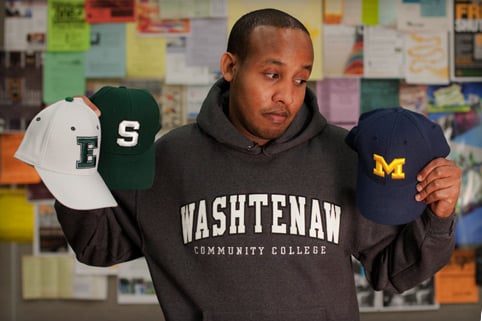Aim for In-State Tuition at Out-of-State Colleges

Naturally, out-of-state public colleges are more expensive than in-state public colleges. For that reason, many students stay in-state for their education. Let's say you can attend college in another state with in-state costs. Sounds like a dream, but is it reality?
Yes, it is.
 It's not as simple as asking for in-state tuition. Thorough research is critical. Luckily, we have the one-stop solution to obtaining an affordable price for colleges not in your state.
It's not as simple as asking for in-state tuition. Thorough research is critical. Luckily, we have the one-stop solution to obtaining an affordable price for colleges not in your state.
Freebies and Bargains: Free colleges exist! College of the Ozarks, Berea College, Alice Lloyd College, and a few more across the country are offering free tuition in exchange for working on campus. There are also colleges where in-state and out-of-state costs aren't that dissimilar such as Eastern Oregon University and Midwestern State University.
Waivers and Credentials: Waivers at selected colleges based on financial need, residence, or personal situations can lower the cost of tuition. Search for waivers on college websites and proceed from there. College credentials offer in-state tuition or discounts to children of alumni, for excellent academics, sports, being in the military, or other various qualifications.
Border State/Good Neighbor: Being close together isn't so bad for students after all. Some colleges allow students from nearby states and counties to attend their college at a discount, usually between in-state and out-of-state tuition costs. Examples of colleges offering this are SIU Carbondale, SIU Edwardsville, Pittsburgh State University, Arkansas Tech University, and Murray State University.
Reciprocity: Reciprocity lowers colleges cost for residents to attend an out-of-state college. There are two reciprocity programs. The first applies to states working an agreement out with colleges in another state. For example Minnesota residents receive in-state or reduced tuition to colleges in Wisconsin, South Dakota, North Dakota, and Iowa Lakes Community College in Iowa. The Midwest Student Exchange and Western Undergraduate Exchange programs have the same requirement. The second reciprocity program relates to area of study. If no college in your state offers your major, choose a college in the region that does and get a discount. The Academic Common Market and New England Regional are examples of programs that support this.
Tuition freeze: Tuition increases yearly, and now there's a way to stop it. Simply freezing tuition or locking in current rates until graduation is a great way to save money. Many colleges are doing this, and it's a matter of taking the opportunity and following the rules to keep the steady rate.
Residency: Few states are refusing to allow students to use residency for lower college costs due to students leaving the area after graduation. Therefore, states like Ohio and Texas provide tough residency requirements. Nevertheless, there are states like Arkansas, Illinois, and Tennessee allowing students to do just that. Read state and college residency guidelines for more information.
Unlike private colleges, where everyone pays the same expensive price tag regardless of residence, public colleges offer price flexibility when paired with the right incentive. Consider these examples the starting point in searching for affordable, yet quality colleges. For more information on colleges, contact us.


